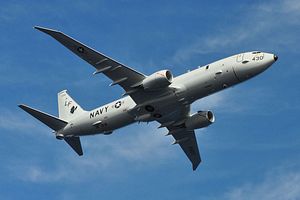Striving to enhance operational capability is a cornerstone of military doctrine, and acquiring the right platforms is a proven strategy for winning wars. This truism is especially relevant for the Republic of Korea Navy (ROKN), which has been facing a direct threat from North Korea since the signing of the Armistices Agreement that halted the Korean War of 1950-53. The character of this threat has changed over the decades, as North Korea has evolved ever more sophisticated means to challenge South Korea in every military domain.
The ROKN’s difficult task is to patrol its area of responsibility (AOR) to detect, track, and destroy unrecognized submarines, which are presumably North Korean underwater assets seeking to infiltrate the AOR and potentially threaten the ROK’s Sea Lanes of Communication (SLOC), a serious challenge to national maritime security. North Korea operates a high-low mixed submarine fleet with the intention to disrupt South Korea’s operational plan in both peacetime and wartime. In addition, North Korea has recently been testing a modified Sinpo-class ballistic missile submarine (SSB) capable of carrying Pukkuksong-1 submarine-launched ballistic missiles.
The most crucial requirement for the ROKN to deter North Korean underwater threats and, if necessary, wage naval warfare against North Korea, is undoubtedly aerial anti-submarine warfare (ASW) operations. Considering the rapidly evolving North Korean underwater capabilities, with unmanned underwater vehicles also an emergent threat, the ROKN’s fleet of aging P-3C Orion maritime patrol aircraft (MPAs), which entered service in the mid-1990s, are no longer fit for purpose. The threat from North Korean SSBs obliges the ROKN to develop new ASW doctrines and procure new assets and platforms: far-sea maritime patrol doctrines are needed, depending upon next-generation MPAs capable of multipurpose missions. The next ROKN Requirement of Operational Capabilities must include such next-generation MPA platforms with high-end operational capabilities; no other requirement is more essential.
It can easily be understood that replacing the P-3Cs to improve air-based ASW mission capabilities is an important and necessary decision, but any replacement aircraft, as well as satisfying MPA operational requirements, must also address several other issues. All of these issues need to considered — and the conclusion was that the only sensible choice for the ROKN is to acquire Boeing’s P-8A through U.S. Foreign Military Sale (FMS).
First, the decision had to take into account how well potential providers meet South Korea’s requirements as well as the particular circumstances of the Korean Peninsula. Seoul’s Defense Acquisition Program Administration (DAPA) intends to procure six P-8A Poseidon MPAs, which is the only viable option: Boeing’s aircraft has been proven suitable for threat-oriented scenarios, and the inflexible stances adopted by other potential suppliers prevented them from meeting DAPA’s requirements for a next-generation MPA. For Boeing’s P-8A Poseidon, sufficient references were provided for the DAPA to fully assess the aircraft and make a decision, whereas neither Saab’s Swordfish MPA nor Airbus’s C295 turbo-prop MPA provided the necessary references to meet DAPA’s requirements. Doubts remain about both these aircraft, which have failed to demonstrate adequate and appropriate operational capabilities, notwithstanding the attempts made by their manufacturers to use South Korean newspapers to advocate for their aircraft and claim discrimination. Unless European defense companies are willing to address the changes necessary to satisfy DAPA, there is little prospect of them striking a deal.
Second, the ability to share a common operational perspective with allies and partners, such as Japan, Australia, and New Zealand, among others, is vital. ASW warfare entails not only combined or joint naval operations, but also information-sharing. For example, in the East Sea (aka the Sea of Japan), the process of implementing the various UN Security Council Resolutions against North Korea involves the United States, Japan and other like-minded countries, such as Canada. This will surely be facilitated by cooperating navies adopting the same platforms, and the P-8A Poseidon is already in use by at least five navies around the world, including the navies of Japan and India.
Third, some political, diplomatic, and financial factors exerted a significant impact on DAPA’s decision. South Korea is under heavy pressure from U.S. President Donald Trump to defray the costs of maintaining U.S. forces in South Korea. The Special Measures Agreement discussions currently underway are about reaching a multiyear cost-sharing deal under the Status of U.S. Forces Agreement, revising the details of South Korean contributions. The ROKN’s procurement of P-8As provides a useful fillip to Trump’s “America First” policy, and will hopefully mitigate U.S. pressure on cost-sharing. Thus, the strategic implications of acquiring P-8As must take account of the utility of such a quid pro quo.
Finally, the ROKN’s pilots have become familiar with the P-3C Orion since the mid-1990s, and many of them are reluctant to retrain for a substantially different kind of MPA. For a number of reasons, the pilots prefer the P-8A Poseidon to the Saab Swordfish MPA or the Airbus C295 MPA, and this preference was surely considered by DAPA when deciding which next-generation MPA to acquire to replace the aging P-3C.
To summarize: South Korea’s procurement perspective had to meet its Requirement of Operational Capabilities for a next generation MPA, and take into account the real operational ramifications when it comes to maintaining interoperability between South Korea and the United States, as well as tactical commonalities with Japan, Australia, and New Zealand, and perhaps also with India in the Indian Ocean. It is fair to say that for the ROKN, Boeing’s P-8A MPA is the only aircraft proven to meet the ROKN’s ASW doctrines, and this choice also facilitates interoperability with the United States and with other partners around the region.
Sukjoon Yoon is a retired navy caption in the Republic of Korea Navy (ROKN) and a Research Fellow of the Korea Institute for Military Affairs (KIMA).

































